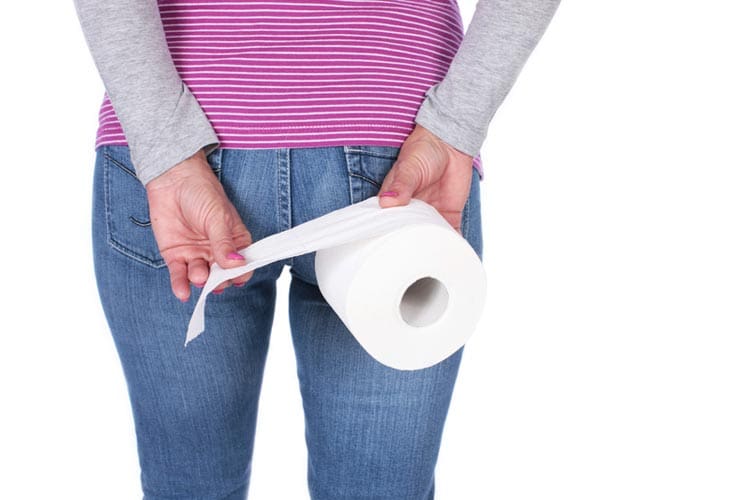If you have symptoms of haemorrhoids, it is important to visit your doctor to make sure that the bleeding, pain or swelling is due to a haemorrhoid and not due to anything more serious.
Self-care treatments are usually the first option for treating haemorrhoids, and are often all that is needed. However, people who have ongoing problems may need more advanced medical treatment.
Self-care
External hamorrhoids
External haemorrhoids that are swollen and painful respond well to a plain, warm water bath. Soak the affected area for about 10 minutes. Alternatively, you can use a sitz bath, which is a small bathing bowl that you fill with clean, warm water and place over your toilet bowl — you then ‘sit’ your bottom in the bath several times a day, and especially after passing a motion, to help relieve the pain and swelling of a haemorrhoid.
Pain relievers (such as paracetamol) and cold compresses can help relieve the pain, swelling and discomfort associated with thrombosed external haemorrhoids (when a blood clot forms in an external haemorrhoid).
Creams or suppositories for haemorrhoids, which are available over the counter at your pharmacy, can be used to reduce itch and discomfort in the short term. Ask the pharmacist for advice on which product is best for you. See your doctor if your symptoms do not settle in a few days.
Wash external haemorrhoids after each bowel motion with warm water (using a sitz bath is an easy way to do this). Disposable baby wipes, available at chemists and supermarkets, are an ideal way to clean the area around the anus.
Internal hamorrhoids
A protruded internal haemorrhoid may need to be gently pushed back inside the anus. Your doctor can advise you about what to do in this situation.
Preventing constipation
Preventing constipation by aiming to form soft stools that are passed easily is the best way to avoid existing haemorrhoids becoming irritated and new haemorrhoids forming. Eat a diet that is high in fibre (fruit, vegetables and wholegrain cereals), drink plenty of fluids, and exercise on a regular basis. Avoid excessive straining and sitting on the toilet for any longer than a few minutes.
Advanced treatments for haemorrhoids
There are several advanced treatments which can be used for people who have continuing difficulty with haemorrhoids. They include the following.
- Sclerotherapy. Injection of a haemorrhoid with a chemical that shrinks the blood vessels within the haemorrhoid.
- Banding (rubber band ligation). This involves applying a tight elastic band around an internal haemorrhoid to cut off its blood supply. The haemorrhoid then falls off painlessly.
- Coagulation techniques that destroy the haemorrhoid tissue and/or its blood supply include laser therapy, infra-red light (photocoagulation) and electric current (electrocoagulation).
- A blood clot in an external haemorrhoid is sometimes treated by incising the haemorrhoid under local anaesthetic to remove the blood clot.
- A surgical operation called a haemorrhoidectomy may be required for a small number of people. The haemorrhoids are surgically removed under anaesthetic. This may require a short stay in hospital.
If you are having ongoing problems with haemorrhoids, ask your doctor about options for treatment.

